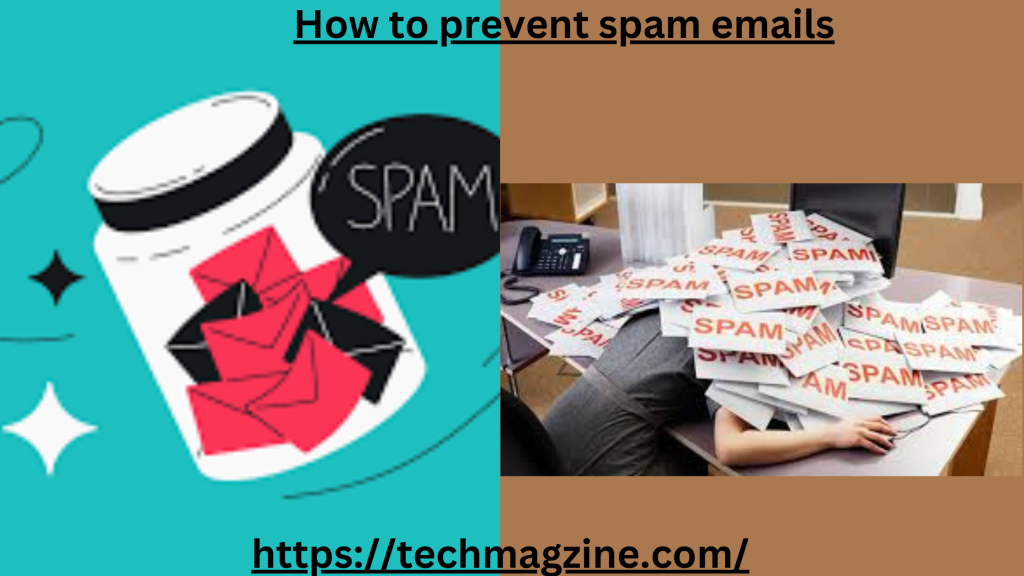Email is a crucial part of modern communication, but with the convenience it brings, there are also challenges—one of the biggest being spam emails. Spam emails flood your inbox with unwanted advertisements, phishing attempts, and sometimes malicious content that can compromise your security and privacy. If you’ve ever wondered how to prevent spam emails, you’re not alone.
In this article, we will walk through some of the most effective strategies to help you keep your inbox clean and secure. We’ll discuss various ways to recognize spam, tools you can use, and best practices to reduce or eliminate spam emails entirely.
What Are Spam Emails?
Before diving into how to prevent spam emails, it’s essential to understand what spam emails are. Spam emails are unsolicited or unwanted messages sent in bulk, usually for advertising, phishing, or malicious purposes. These emails often contain links to questionable websites or attachments that can install malware on your device. Spam emails can also try to trick you into giving away sensitive information, such as passwords or credit card numbers.
Spam can take several forms, including:
- Advertising Emails: Companies or individuals send bulk emails to promote products or services.
- Phishing Emails: These are emails designed to trick you into giving away sensitive information.
- Malware Emails: Contain harmful attachments or links that can infect your device.
Now, let’s explore how to prevent spam emails from reaching your inbox.
How to Prevent Spam Emails: Best Practices

- Use Spam Filters
Spam filters are one of the most effective tools to prevent spam emails from flooding your inbox. Most email service providers, like Gmail, Outlook, and Yahoo, offer built-in spam filters. These filters automatically detect and move suspicious emails to a “Spam” or “Junk” folder, keeping them out of your main inbox.
To make the most of spam filters:
- Ensure your spam filter settings are enabled and set to the appropriate level of protection.
- Regularly check your spam folder for legitimate emails that may have been filtered incorrectly.
- Be Cautious When Sharing Your Email Address
Another critical step in how to prevent spam emails is to be careful where and how you share your email address. Avoid publishing your email address on public websites, forums, or social media profiles. Spammers often use automated bots to scrape websites for email addresses, which they then use for mass email campaigns.
If you need to share your email publicly, consider these options:
- Use a disposable or temporary email address for short-term use.
- Mask your email address using special characters (e.g., instead of “youremail@example.com,” write “your email [at] example [dot] com”).
- Avoid Clicking on Suspicious Links
One of the golden rules for how to prevent spam emails from turning into a security threat is to never click on suspicious links. Even if the email appears legitimate, it’s important to scrutinize the message and verify the sender before clicking on any links or downloading attachments.
If you’re unsure about a link, hover over it with your mouse (without clicking) to see the destination URL. If it looks strange or doesn’t match the sender’s website, avoid clicking on it.
- Don’t Reply to Spam Emails
Replying to spam emails is one of the biggest mistakes you can make. By responding, you confirm to the spammer that your email address is active, which can lead to even more spam. In addition, some phishing emails may contain language designed to provoke a response, such as claiming there’s an issue with your account or offering a reward. Ignore these messages and delete them immediately.
- Unsubscribe from Mailing Lists
If you’re receiving a large number of promotional emails that you no longer wish to see, use the unsubscribe link typically located at the bottom of the email. While unsubscribing from legitimate mailing lists is a good strategy for how to prevent spam emails, be cautious when it comes to unsolicited spam emails. Never click on “unsubscribe” links in emails from unknown or suspicious sources, as this could confirm your address to the spammer.
- Mark Emails as Spam
Email providers make it easy to report unwanted emails. When you mark an email as spam, the email service will take note and improve its filtering algorithms to block similar messages in the future. This not only helps you, but it also helps others by reducing the number of spam emails circulating.
Most email platforms provide a “Report Spam” or “Mark as Junk” option. Make it a habit to use this feature for any unwanted emails.
- Use a Secondary Email Address
Using a secondary email address for online registrations, newsletters, or non-essential services is another smart strategy for how to prevent spam emails. By keeping a separate inbox for these activities, your primary inbox will remain uncluttered, and you’ll reduce the chances of your main email address being added to spam lists.
- Enable Two-Factor Authentication (2FA)
Though not directly related to how to prevent spam emails, enabling two-factor authentication (2FA) can protect your email account from being compromised. In the event that a spam email tricks you into providing login credentials, 2FA adds an extra layer of security by requiring a secondary verification step, such as a code sent to your phone.
- Update Your Email Security Settings
Regularly updating your email security settings is essential to keeping your inbox secure. Many email services offer advanced security features, such as encryption, to protect your data. Make sure to review and adjust these settings to enhance your protection.
Some additional tips for enhancing email security include:
- Enabling SSL/TLS encryption.
- Turning off automatic image loading in emails (spammers can use hidden tracking pixels).
- Setting up a strong password and changing it regularly.
- Use Anti-Spam Software
In addition to your email provider’s spam filter, using anti-spam software can give you an added layer of protection. This software works by identifying and blocking spam emails before they even reach your inbox. Popular anti-spam programs include MailWasher, SpamSieve, and SpamAssassin.
These programs often allow for customizable settings, giving you more control over how to prevent spam emails and manage your inbox.
Recognizing and Avoiding Common Spam Tactics
Spammers are constantly evolving their tactics, making it essential to stay aware of new and emerging trends. Here are some common types of spam emails and what to watch out for:
- Phishing Emails: Often disguised as official correspondence from banks, government agencies, or popular online services, these emails will ask for sensitive information, such as login details or financial information. Legitimate organizations will never ask for this information via email.
- Fake Invoices or Receipts: Some spam emails try to trick you by sending fake invoices, making you believe you’ve made a purchase. Always check your transaction history directly with the company before taking any action.
- Lottery or Prize Scams: Be wary of emails claiming you’ve won a lottery or prize, especially if you never entered a contest. These are often phishing attempts to collect personal information.
- Job Offers or Investment Opportunities: Many spam emails come in the form of “too good to be true” job offers or investment opportunities. Verify the legitimacy of these offers by researching the company or individual.
How to Prevent Spam Emails on Different Platforms
Each email service offers specific tools and settings to help manage spam. Below are some tips for how to prevent spam emails on the most popular platforms:
Gmail
- Use Gmail’s “Report Spam” feature to notify Google of unwanted emails.
- Set up filters in Gmail to automatically route specific emails to your spam folder.
- Turn on “Confidential Mode” for sensitive communications.
Outlook
- Use the “Block” feature to prevent emails from specific addresses from reaching your inbox.
- Mark suspicious emails as junk to train Outlook’s filters.
- Enable advanced spam protection under the “Junk Email” settings.
Yahoo Mail
- Use Yahoo’s “Spam Guard” to automatically block spam emails.
- Set up filters to manage incoming emails more effectively.
- Mark any spam emails manually to improve Yahoo’s filtering system.
Conclusion: How to Prevent Spam Emails Effectively
Learning how to prevent spam emails is crucial in maintaining a secure and organized inbox. By following these strategies—using spam filters, being cautious with your email address, avoiding suspicious links, and reporting spam—you can significantly reduce the number of unwanted messages you receive.
Spam emails aren’t just an annoyance; they can be dangerous. Taking proactive steps to secure your email account will protect you from potential scams, phishing attempts, and malware. Stay vigilant, use the tools available, and remember, the more you invest in preventing spam, the safer your online communication will be.
